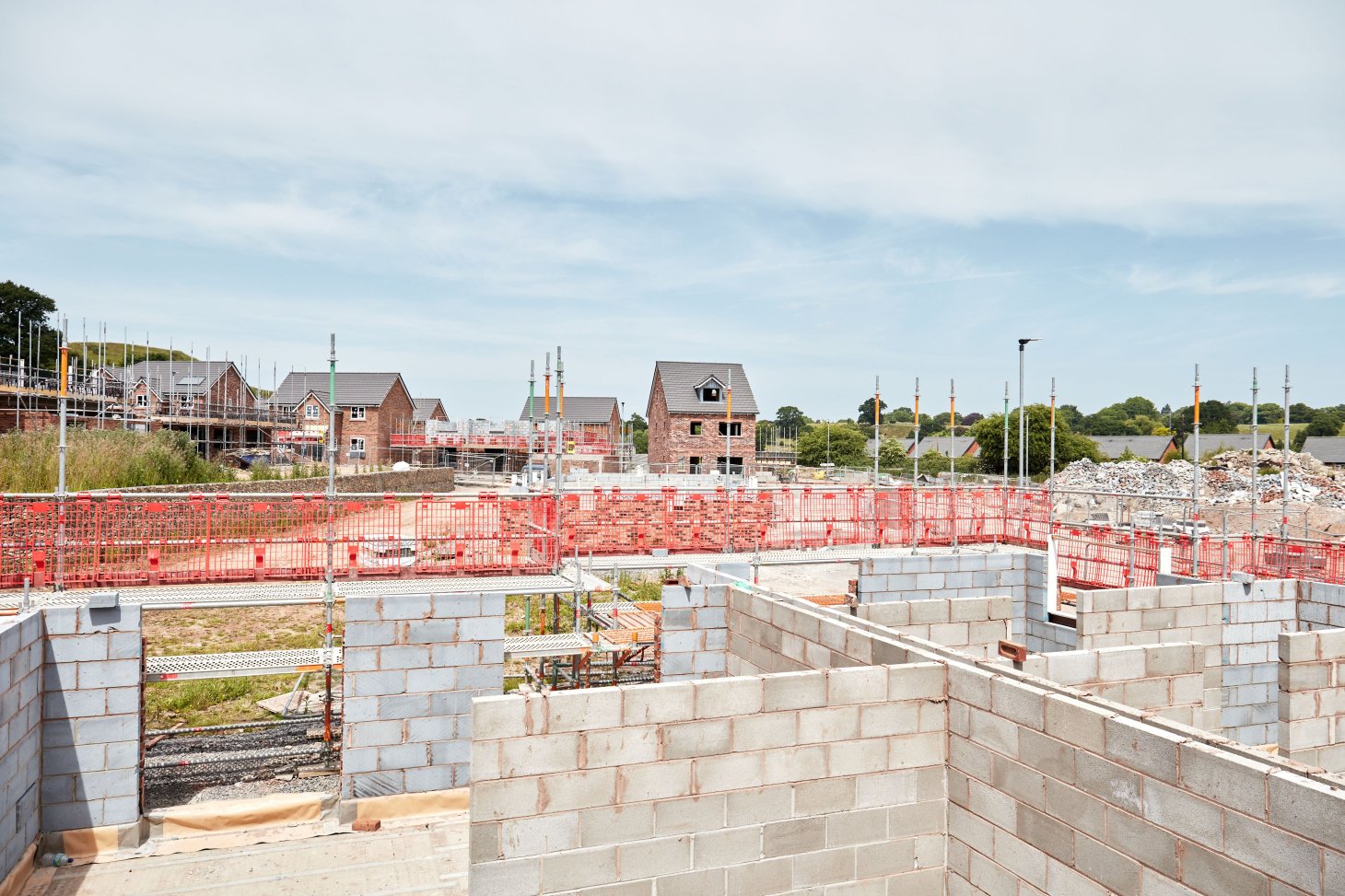
As the UK faces increasingly extreme weather, building new homes that are resilient to climate change has never been more important. According to the Climate Change Committee’s 2025 adaptation progress report, the risks to people, infrastructure, and housing from climate change are growing rapidly – and urgent action is needed to adapt the UK’s built environment.
A new national survey by UK Concrete and Opinium reveals that 77% of people would prefer new homes to be built in a way that protects against future climate impact. This sends a clear signal to housebuilders: resilience is no longer optional – it’s expected.
Tackling overheating with thermal mass
A key risk posed by a warming climate is overheating in homes. With hotter summers and more frequent heatwaves expected, future-ready housing must be designed to stay cool and comfortable without excessive reliance on air conditioning.
Thermal mass – the ability of a material to absorb and store heat – plays a vital role in maintaining stable internal temperatures. Aircrete’s high thermal mass helps absorb excess heat during the day and slowly releases it at night, reducing internal temperature fluctuations and the risk of overheating. This passive cooling effect can reduce reliance on mechanical cooling systems, lowering both energy use and occupant discomfort.
UK Concrete’s survey found that 66% of respondents prioritised well-insulated walls, windows, doors, and roofing when choosing a new home – a strong indicator that energy efficiency and comfort are top of mind for buyers.
Flood resilience and material performance
Another major climate risk is the increased frequency and severity of flooding. 90% of respondents rated it important that their home was constructed from materials that protect against water ingress and escapes. The Environment Agency has emphasised the importance of property-level flood resilience (PFR) measures, particularly as 5.7 million properties in England are currently at risk.
Building with durable, non-degradable materials is key to reducing this risk. Masonry systems such as aircrete offer outstanding flood resilience. They don’t rot, warp or degrade over time, and their dimensional stability maintains structural soundness before, during, and after flood events. In contrast, timber construction is vulnerable to water damage and may require extensive replacement or remediation following flooding.
As the Mineral Products Association notes: “Masonry construction offers dimensional stability and structural integrity during and after flood events, a stable surface for waterproof membranes, fast restoration post-flood, and is a non-degradable material that doesn’t rot, rust or warp. No other construction method offers this level of resilience.”
Homegrown, sustainable materials
Sustainability and supply chain security also matter. The survey revealed that 61% of people prefer homes built with local construction materials from the UK. H+H aircrete fits the bill: it is manufactured in the UK from locally sourced raw materials.
In contrast, structural timber is largely imported and subject to international market volatility, with growing concerns that increasing global demand may outstrip sustainable supply. These factors raise questions about the long-term resilience and environmental impact of relying on timber as a primary construction material.
A material homeowners trust
With growing concern about build quality, 52% of respondents said they would prioritise homes built with high-quality materials, while 63% said build quality should be a top government priority. Aircrete delivers on both counts.
Regional housebuilders like Karm Homes and Northstone have embraced H+H aircrete solutions for their proven performance and durability. Martin Keenes, Director at Karm Homes, explains: “We’ve looked at other MMC systems, such as SIPs, but found them to be more expensive than the i-House masonry solution which centres around H+H Vertical Wall Panels – plus there are increased fire risks and higher insurance premiums with timber builds. We also prefer masonry because our customers expect the durability it provides.”
Northstone Site Manager Paul Morris adds: “With traditional brick and block you get a better build resulting in long-lasting, robust, energy-efficient homes. We’ve worked with H+H aircrete blocks on our developments and find them great products that are easy to work with.”
Building for climate resilience means using materials that stand up to heat, flooding, and long-term environmental change. Aircrete offers a future-proof solution: durable, thermally efficient, fire-resistant, and manufactured in the UK.
For housebuilders, the message is clear – resilience sells, and masonry delivers it.
Source
UK Concrete and Opinium research: https://www.thisisukconcrete.co.uk/Perspectives/UKC-Housing-Report.aspx